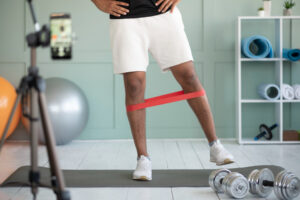Think pull-ups are getting too easy? It’s time to push yourself with advanced bodyweight pull exercises that will test your strength, coordination, and patience. Pull-based movements are essential for developing upper body power, targeting your lats, biceps, rear delts, and even the core. But beyond aesthetics, mastering advanced pull exercises helps build functional strength and increases joint stability—things that machines or isolated movements can’t fully offer.
These exercises are not just about pulling yourself up but learning to control your body in new ways. They’ll teach you how to engage smaller stabilizing muscles while building explosive power. Whether you’re training for strength, endurance, or skill, the exercises below will force you to step out of your comfort zone. Ready to level up? Let’s dive in.
Prerequisites for advanced pull movements
Before you start with these advanced drills, it’s essential to lay a solid foundation. Jumping in too soon can not only stall progress but also lead to injury. Make sure you’ve ticked these boxes:
- Mastery of pull-ups: You should be comfortable hitting 8–10 strict pull-ups with proper form (full range of motion, no swinging). This ensures you have the baseline strength needed to explore more complex movements.
- Shoulder mobility: Advanced pull exercises place a lot of strain on your shoulders. Incorporate stretches like wall slides and shoulder dislocates to prevent injury and maximize performance.
- Core strength: Many of these moves require solid body control, meaning you’ll need a strong core to stay in position. Exercises like planks, hollow body holds, and hanging leg raises are great for prepping.
- Accessory work: Get familiar with movements like scapular pull-ups and negatives. These will condition your joints and stabilizers, making harder moves more achievable.
Top advanced bodyweight pull exercises
Here are advanced pull moves you can try:
1. Archer pull-ups
- How to perform: From the pull-up position, pull your body towards one side while the opposite arm remains extended. Switch sides with each rep.
- Why it’s effective: Builds unilateral strength and enhances shoulder stability. It also forces you to engage your core to avoid twisting out of position.
- Pro tip: If it’s too difficult, start by practicing partial reps or use resistance bands for support.
2. Typewriter pull-ups
- How to perform: Pull yourself up, then shift your body horizontally from one side to the other, like a typewriter moving across the bar.
- Why it’s effective: This challenges both strength and endurance, forcing your lats and core to work overtime.
- Pro tip: Keep the motion slow and controlled to avoid using momentum—this is key for reaping the full benefits.
3. One-arm pull-up (Progression)
- How to perform: A full one-arm pull-up requires serious strength. Start with assisted versions using bands or do slow negatives where you control the descent with one arm.
- Why it’s effective: It’s one of the ultimate upper-body strength tests, demanding maximum lat, grip, and core activation.
- Pro tip: Work on weighted pull-ups first—being able to pull with 50% of your bodyweight attached is a solid goal before attempting one-arm pulls.
4. Front lever pulls
- How to perform: In a front lever position (body parallel to the ground), perform pull-ups by pulling your body towards the bar.
- Why it’s effective: Engages your lats and core intensely while requiring excellent scapular control.
- Pro tip: Start with tuck front lever pulls if holding a full front lever is still out of reach.
5. Cliffhanger pull-ups
- How to perform: Use only your fingertips on the edge of a pull-up bar or a very narrow grip to perform pull-ups.
- Why it’s effective: This exercise builds insane grip strength and forearm endurance, critical for climbers and athletes needing strong hands.
- Pro tip: Start with shorter sets to avoid overloading your tendons—grip-focused movements can take time to adapt to.
6. Muscle-ups
- How to perform: Begin with a pull-up but continue the motion until your torso clears the bar, transitioning into a dip at the top.
- Why it’s effective: Muscle-ups are explosive and test your ability to control multiple movement phases. They improve both pulling and pressing strength.
- Pro tip: Avoid early kipping—build the strength to perform strict muscle-ups to ensure proper mechanics and safety.
Final thoughts
Advanced bodyweight pull exercises are not just a strength challenge—they’re a test of patience, coordination, and perseverance. Each movement takes time to master, but the rewards are worth it. As you progress, you’ll not only build a stronger upper body but also develop better body control and functional fitness that transfers to other activities.







